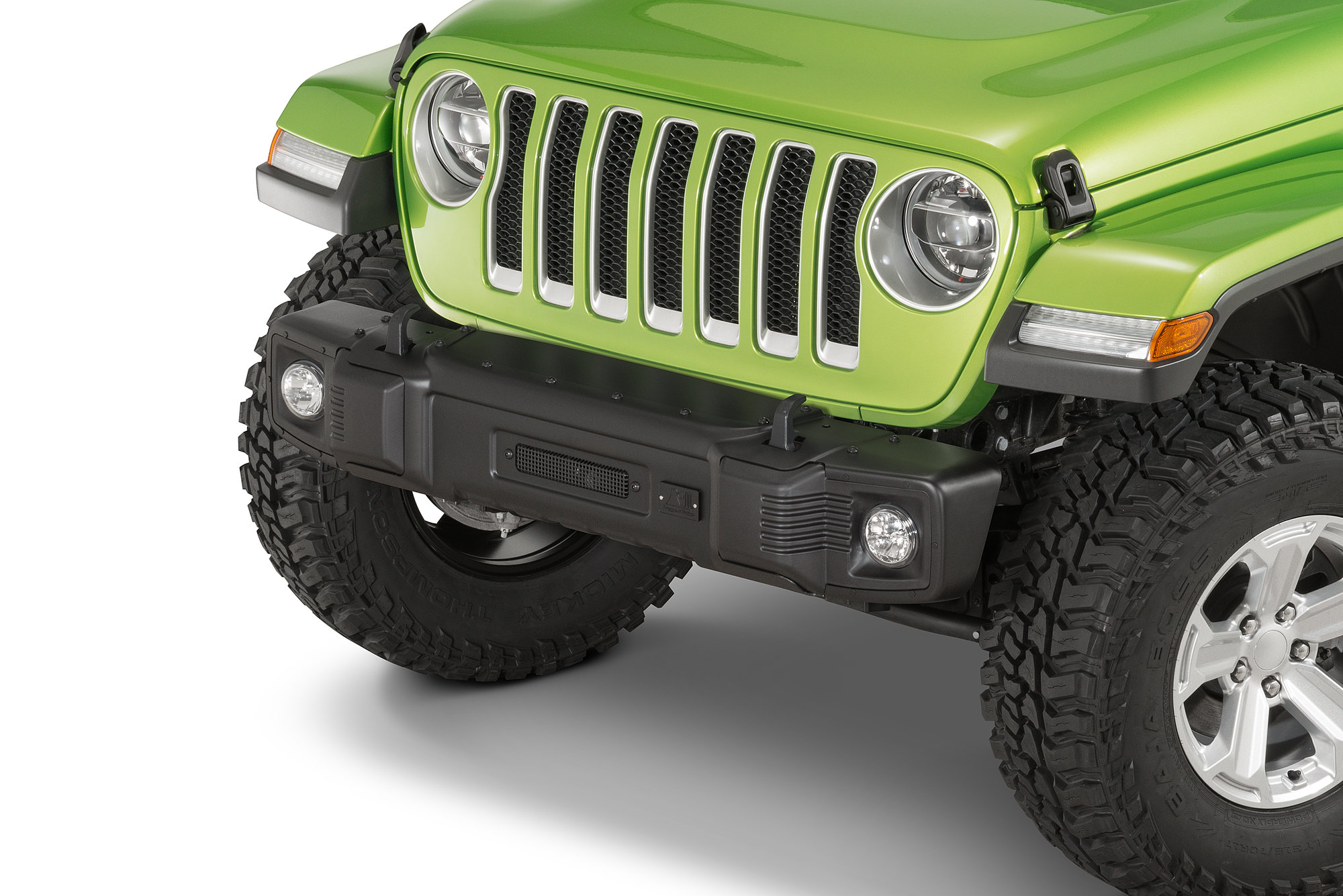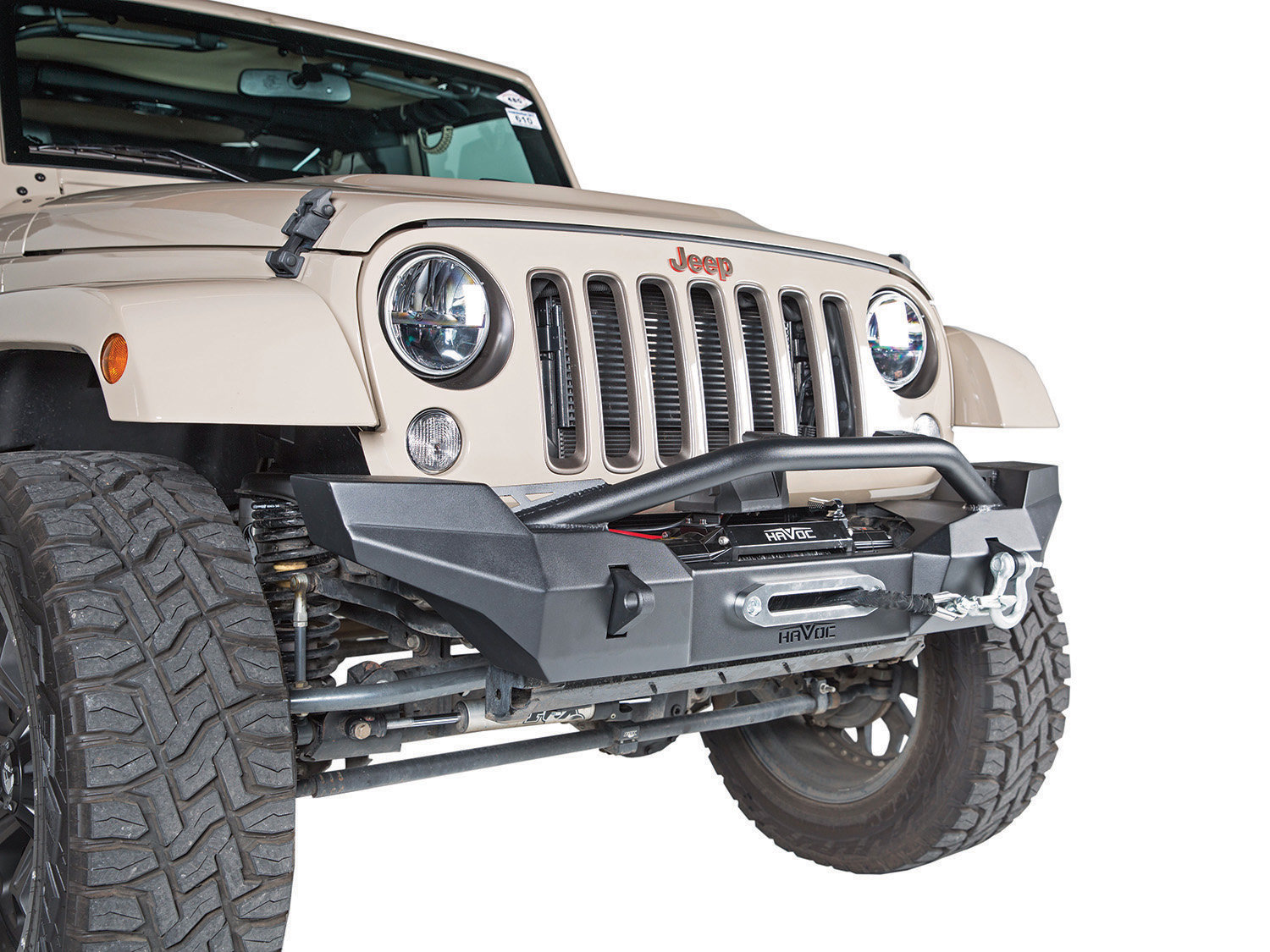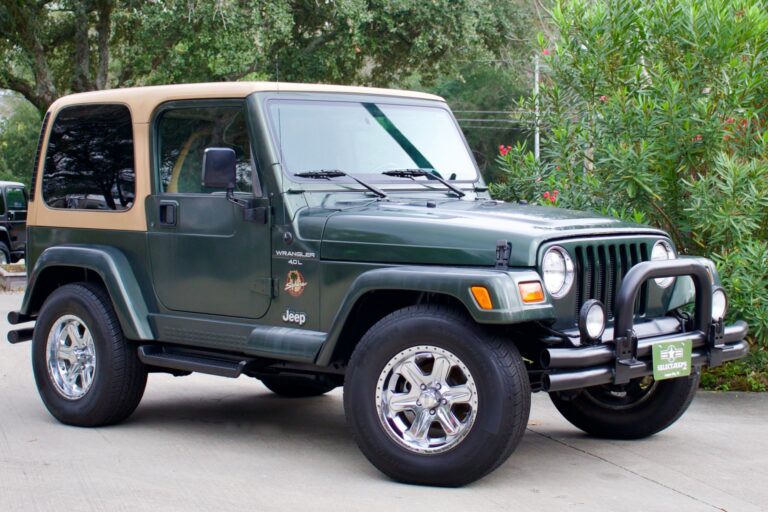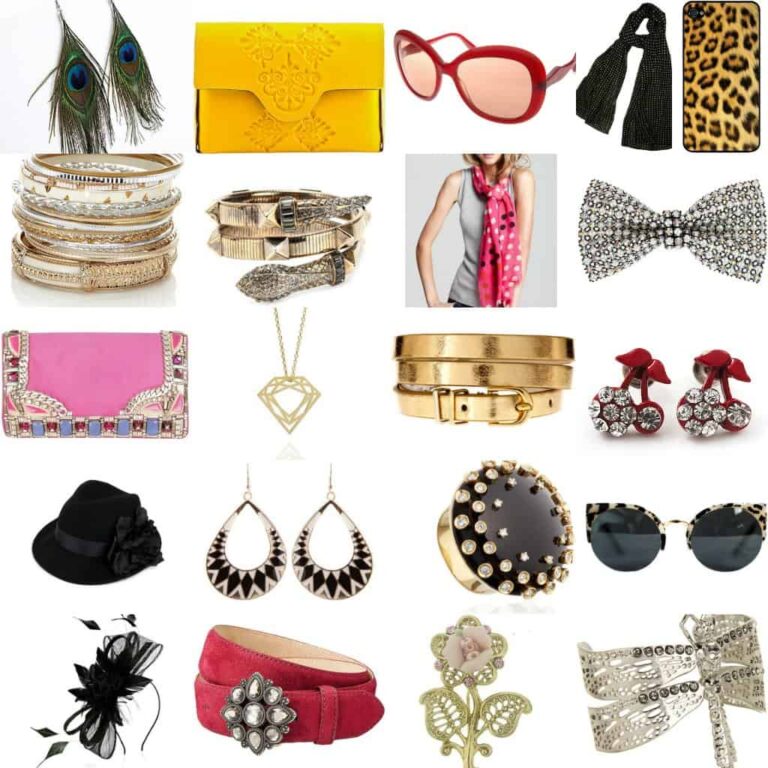Jeep Bumpers For Sale: Your Ultimate Guide to Upgrading Your Off-Road Beast
Jeep Bumpers For Sale: Your Ultimate Guide to Upgrading Your Off-Road Beast /jeeps.truckstrend.com
The iconic Jeep Wrangler, with its rugged capability and adventurous spirit, is more than just a vehicle; it’s a lifestyle. For many Jeep owners, the journey doesn’t stop at the dealership. Customization is a rite of passage, and one of the most impactful upgrades you can make to your Jeep is replacing its stock bumpers. Whether you’re looking to enhance protection, improve recovery options, add lighting, or simply give your rig a more aggressive stance, the market for "Jeep Bumpers For Sale" offers an astounding array of choices.
This comprehensive guide will navigate the exciting world of aftermarket Jeep bumpers, exploring why they’re essential, the various types available, key features to consider, and how to make the best choice for your specific needs and adventures.
Jeep Bumpers For Sale: Your Ultimate Guide to Upgrading Your Off-Road Beast
Why Upgrade Your Jeep Bumper? Beyond Just Looks
While an aftermarket bumper undeniably transforms your Jeep’s aesthetics, its primary purpose goes far beyond mere appearance. Stock bumpers are often designed for light-duty use and meeting basic safety regulations. For those who truly embrace the Jeep lifestyle – hitting the trails, overlanding, or even just navigating challenging urban environments – an upgraded bumper offers a multitude of practical advantages:
- Enhanced Protection: Off-roading exposes your Jeep to rocks, trees, and unforeseen obstacles. Aftermarket bumpers, typically constructed from robust steel or aluminum, provide superior impact resistance, protecting critical components like your grille, radiator, and headlights from damage.
- Improved Recovery Options: Most aftermarket bumpers feature integrated D-ring (shackle) mounts, providing strong, secure points for winching, towing, or being recovered. This is crucial for safely getting out of sticky situations on the trail.
- Winch Compatibility: For serious off-roaders, a winch is an indispensable tool. Many aftermarket front bumpers are designed with integrated winch plates, allowing for a seamless and secure installation of a recovery winch.
- Auxiliary Lighting Integration: The trails can be dark! Aftermarket bumpers often include dedicated cutouts or mounting tabs for auxiliary lights, such as fog lights, LED light bars, or cube lights, significantly improving visibility during night expeditions.
- Integrated Tire Carriers: For larger aftermarket tires that won’t fit on the stock tailgate mount, many rear bumpers offer robust swing-out tire carriers. This takes the weight off your tailgate hinges, preventing damage and allowing for larger tire fitment.
- Hi-Lift Jack Points: Some bumpers are designed with specific points for safely lifting your vehicle with a Hi-Lift jack, a versatile tool for tire changes or recovery in challenging terrain.
- Increased Approach/Departure Angles: Many aftermarket bumpers are designed with a higher clearance profile than stock, improving your Jeep’s approach (front) and departure (rear) angles. This means less scraping and snagging when tackling steep obstacles.
- Customization and Personalization: Beyond functionality, aftermarket bumpers allow you to personalize your Jeep, reflecting your style and intended use. From sleek and minimalist to aggressive and utilitarian, there’s a bumper to match every taste.
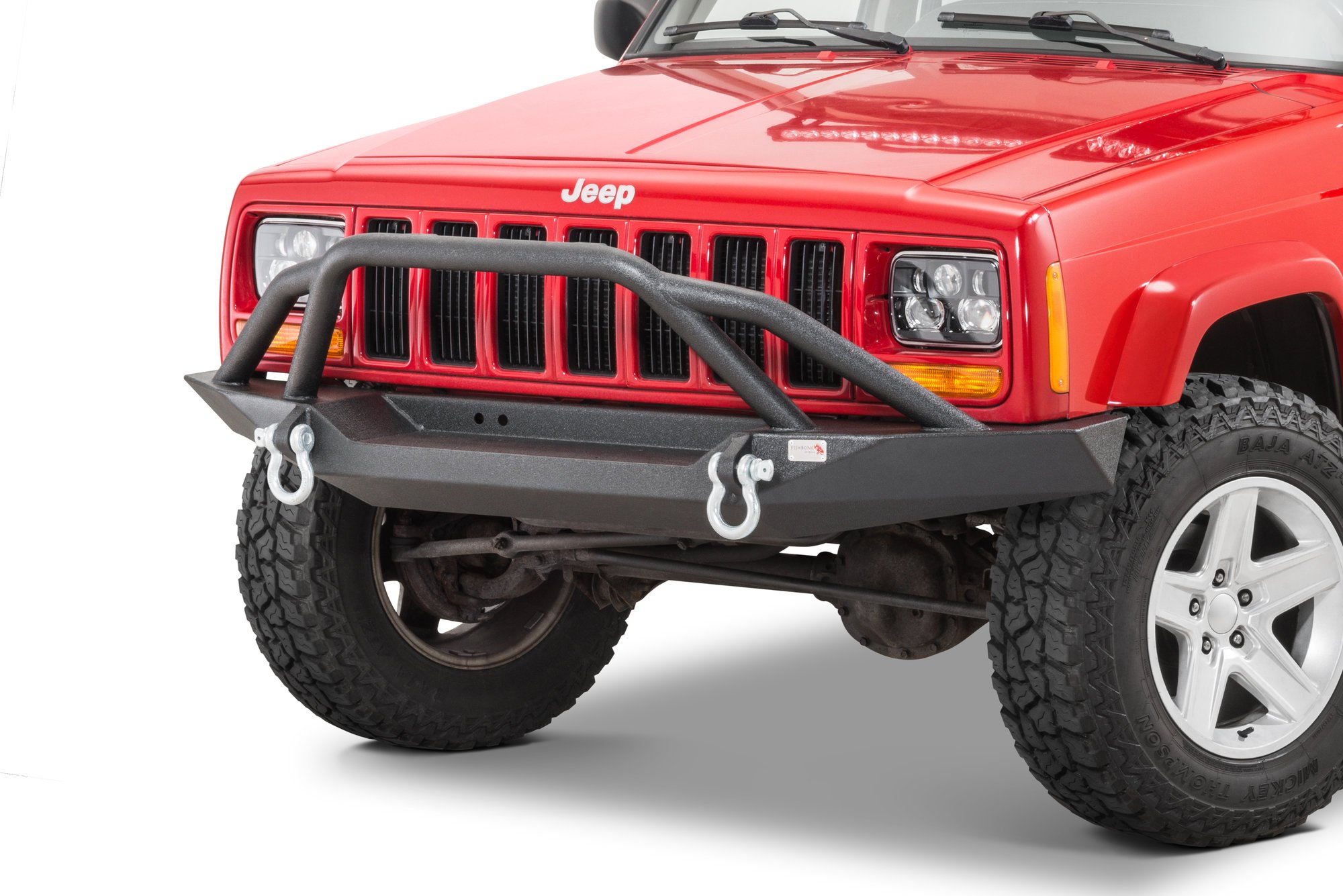
Types of Jeep Bumpers: Finding Your Perfect Match
The market for "Jeep Bumpers For Sale" is vast, with options tailored for every model and every type of adventure. Bumpers are broadly categorized into front and rear, with further sub-categories based on width, features, and design.
Front Bumpers: Leading the Charge
- Stock Replacement/Full-Width: These bumpers often mimic the width of the factory bumper, extending to cover the full width of the fender flares. They offer good protection and a traditional look, often with enhanced features like winch mounts and D-ring tabs.
- Mid-Width: A popular compromise, mid-width bumpers extend past the grille but stop short of the full fender width. They offer increased protection compared to stubby bumpers while maintaining better clearance than full-width options, balancing aesthetics and functionality.
- Stubby Bumpers: Designed for maximum approach angle and tire clearance, stubby bumpers are minimalist, typically only covering the width of the grille. They are ideal for hardcore rock crawling, exposing more of the front tires for obstacle navigation.
- Winch Bumpers: Specifically designed to accommodate a winch, these bumpers feature a reinforced winch plate and often have an open top for easy access to the winch drum. They can be found in stubby, mid-width, or full-width configurations.
- Grille Guards/Bull Bars: Some front bumpers integrate a tubular "grille guard" or "bull bar" that extends upwards to protect the grille and headlights from brush or minor impacts.
- Tube Bumpers: Constructed from tubular steel, these bumpers offer a lightweight yet strong protective cage for the front of the vehicle, often seen on competition-style rigs.
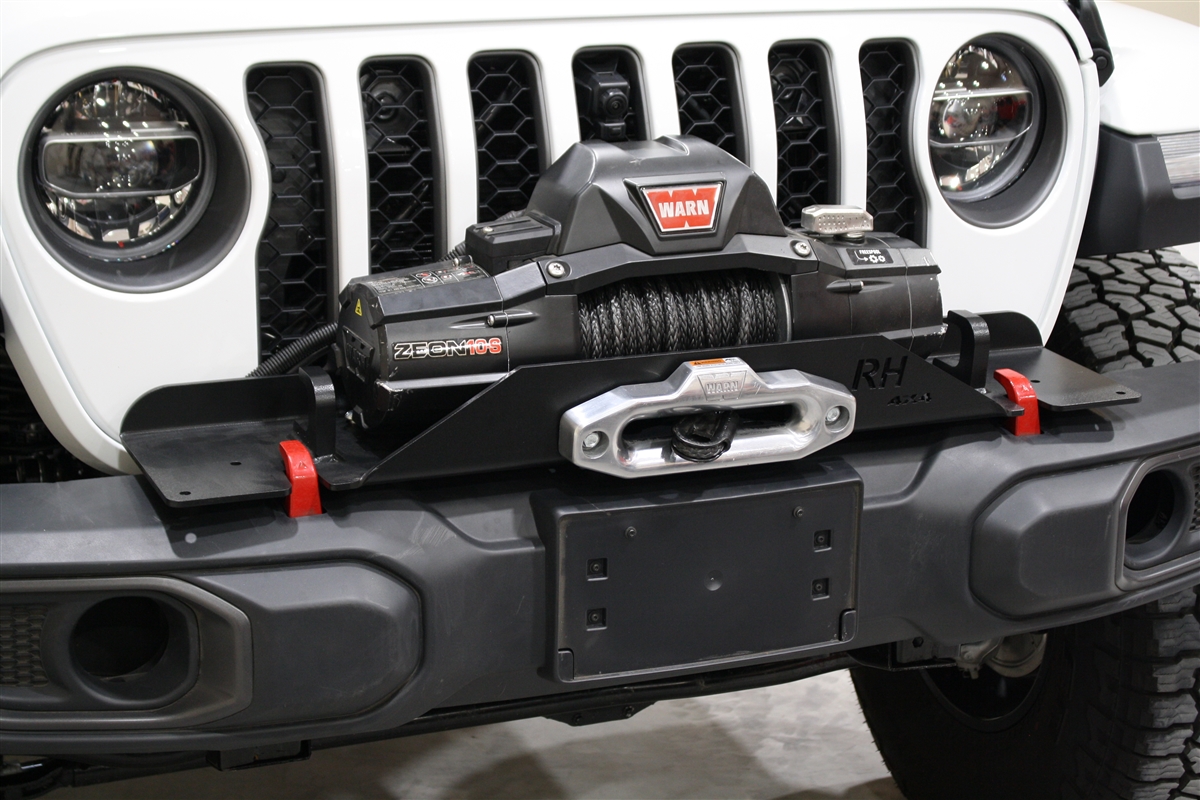
Rear Bumpers: Protecting Your Six
- Stock Replacement/Full-Width: Similar to their front counterparts, these replace the factory rear bumper, often adding recovery points and sometimes a receiver hitch.
- Tire Carrier Bumpers: Arguably the most common aftermarket rear bumper, these integrate a swing-out tire carrier arm. This is essential for mounting larger spare tires (33 inches and up) that are too heavy for the factory tailgate, preventing tailgate damage and allowing for better visibility.
- Recovery Bumpers: Focused on recovery, these rear bumpers feature robust D-ring mounts and are often designed to maximize departure angles.
- Corner Guards with Integrated Bumpers: For extreme off-road protection, some systems combine rear corner armor with an integrated bumper, offering comprehensive protection for the rear quarter panels and taillights.
Materials and Finishes: Durability Meets Style
The material and finish of your Jeep bumper significantly impact its durability, weight, and aesthetic.
- Steel: The most common and robust material for aftermarket bumpers.
- Plate Steel: Offers maximum strength and rigidity, ideal for heavy-duty off-roading and winch applications. It’s heavier, which can impact suspension and fuel economy.
- Tubular Steel: Lighter than plate steel but still very strong, often used for minimalist or custom designs.
- Aluminum: A lighter alternative to steel, aluminum bumpers reduce overall vehicle weight, which can improve fuel economy and reduce strain on suspension components. While strong, they are generally less impact-resistant than steel for direct, hard hits and often come at a higher price point.
- Finishes:
- Powder Coating: The most popular finish, offering excellent durability, corrosion resistance, and a variety of colors (most commonly textured black).
- Bare Steel/Aluminum: Allows for custom paint or coating, or a raw, industrial look.
- Textured Finishes: Provide a rugged, scratch-resistant surface.
Key Features to Look For When Shopping for Jeep Bumpers For Sale
When browsing "Jeep Bumpers For Sale," consider these crucial features to ensure you get the most out of your investment:
- D-Ring/Shackle Mounts: Essential for recovery. Ensure they are welded directly to the bumper frame, not just bolted on.
- Winch Plate/Mount: If you plan on running a winch, ensure the bumper is designed to accommodate one.
- Auxiliary Light Mounts: Check for cutouts or mounting tabs for fog lights, LED light bars, or other off-road lighting.
- Tire Carrier Integration: If running larger tires, a swing-out tire carrier is a must for rear bumpers.
- Hi-Lift Jack Points: Dedicated spots for safe Hi-Lift jack use.
- Receiver Hitch: Many rear bumpers integrate a Class II or Class III receiver hitch for towing.
- Sensor Compatibility: For newer Jeeps with parking sensors or adaptive cruise control, ensure the bumper is designed to accommodate these features.
- Approach/Departure Angle Improvement: Look for bumpers designed with a high-clearance profile.
Choosing the Right Bumper for Your Needs: Practical Advice
Selecting the perfect Jeep bumper requires careful consideration of your specific vehicle, intended use, and budget.
- Define Your Usage:
- Daily Driver/Light Trails: A full-width or mid-width steel bumper with recovery points and perhaps light mounts might suffice.
- Weekend Warrior/Moderate Off-Roading: Mid-width or stubby front with winch capability, and a full-featured rear bumper with a tire carrier are ideal.
- Hardcore Rock Crawler/Overlander: Stubby front for maximum clearance, heavy-duty rear with tire carrier, and maximum recovery options.
- Vehicle Model and Year: Always verify that the bumper is specifically designed for your Jeep model (e.g., JK, JL, TJ, YJ) and year. Fitment is critical.
- Budget: Bumpers range widely in price based on material, features, and brand. Set a realistic budget before you start shopping.
- Aesthetics: While function is paramount, choose a bumper that complements your Jeep’s overall look and your personal style.
- Installation Complexity: Some bumpers are a direct bolt-on, while others may require minor modifications or extensive wiring for lights and winches. Consider if you’ll DIY or opt for professional installation.
- Weight Impact: Remember that heavy steel bumpers will add significant weight to your Jeep. This can affect suspension performance, requiring upgraded springs or shocks, and may slightly impact fuel economy. Aluminum bumpers are a good option to mitigate weight gain.
- Legal Considerations: Check your local and state laws regarding bumper dimensions, projection, and lighting to ensure compliance.
Where to Buy Jeep Bumpers For Sale
When you’re ready to make a purchase, you’ll find "Jeep Bumpers For Sale" through several reputable channels:
- Specialty Off-Road Retailers (Online & Brick-and-Mortar): Companies like Quadratec, ExtremeTerrain, 4 Wheel Parts, and Northridge4x4 specialize in Jeep aftermarket parts and offer a vast selection, expert advice, and often installation services.
- Manufacturer Websites: Many top bumper brands (e.g., Smittybilt, Warn, ARB, Poison Spyder, MetalCloak, Fab Fours) sell directly from their websites, offering their full product lines.
- Large Automotive Retailers: Some larger auto parts stores or online marketplaces might carry a limited selection of popular bumper brands.
- Used Markets: Websites like Facebook Marketplace, Craigslist, and dedicated Jeep forums can be sources for used bumpers. Exercise caution, inspect items thoroughly for damage, and verify fitment before purchasing.
Installation Tips & Considerations
While some simple bumper replacements can be a DIY project, others are more involved.
- Tools: Gather the necessary wrenches, sockets, ratchets, torque wrench, and potentially a grinder or drill for some installations.
- Safety First: Always use jack stands, wear safety glasses, and disconnect your battery if working with electrical components.
- Wiring: If your new bumper includes provisions for lights or a winch, plan your wiring carefully. Use appropriate gauge wire, fuses, and relays.
- Alignment: Ensure the bumper is properly aligned and torqued to manufacturer specifications.
- Suspension: Be aware that adding a heavy steel bumper (especially with a winch) can cause front-end sag. You may need to upgrade your front coil springs or consider a leveling kit.
Jeep Bumpers For Sale: Representative Price Range Table
Prices for Jeep bumpers vary significantly based on material, brand, features, and the specific Jeep model. The table below provides estimated price ranges for common types of bumpers, to give you a general idea. Always check current pricing from specific retailers and manufacturers.
| Bumper Type (Front) | Material | Key Features | Estimated Price Range (USD) |
|---|---|---|---|
| Stubby Bumper | Steel (Plate/Tube) | Max clearance, D-ring mounts, light tabs (opt) | $300 – $800 |
| Mid-Width Bumper | Steel | Good balance, D-ring mounts, winch plate (opt) | $500 – $1,200 |
| Full-Width Bumper | Steel | Max protection, D-ring mounts, winch plate (opt) | $600 – $1,500 |
| Winch-Ready Bumper | Steel | Integrated winch plate, D-ring mounts | $400 – $1,500+ |
| Aluminum Bumper | Aluminum | Lighter weight, D-ring mounts, winch plate (opt) | $700 – $1,800+ |
| Bumper with Grille Guard | Steel | Front protection, D-ring mounts, light tabs | $700 – $1,600 |
| Bumper Type (Rear) | Material | Key Features | Estimated Price Range (USD) |
| Basic Full-Width Rear | Steel | D-ring mounts, receiver hitch (opt) | $300 – $800 |
| Rear Bumper w/ Tire Carrier | Steel | Swing-out tire carrier, D-ring mounts, hitch (opt) | $700 – $1,800+ |
| Rear Corner Guard Bumper | Steel | Integrated corner protection, D-ring mounts | $800 – $2,000+ |
| Aluminum Rear Bumper | Aluminum | Lighter weight, D-ring mounts, hitch (opt) | $600 – $1,500+ |
Note: These are estimates. Prices can vary significantly based on brand reputation, specific design features, finish, and current market conditions. Installation costs, if professional help is sought, are additional.
Frequently Asked Questions (FAQ) about Jeep Bumpers For Sale
Q1: Do I really need an aftermarket bumper for my Jeep?
A1: Not necessarily if your Jeep is purely a street queen. However, if you plan on any off-road adventures, even light ones, an aftermarket bumper provides significantly enhanced protection, recovery options, and utility that stock bumpers lack.
Q2: Are aftermarket Jeep bumpers street legal?
A2: Generally, yes, but it depends on your local and state laws. Most aftermarket bumpers are designed to be street legal, but some extremely narrow "stubby" designs or those with aggressive protrusions (like stingers) might raise questions in certain jurisdictions. Always check your local vehicle codes.
Q3: How much does a good Jeep bumper cost?
A3: As shown in the table, prices vary widely. A basic front or rear steel bumper can start around $300, while a feature-rich, high-end steel or aluminum bumper with a tire carrier and winch plate can easily exceed $1,500 – $2,000.
Q4: Can I install a Jeep bumper myself?
A4: Many aftermarket bumpers are designed for bolt-on installation, making them a feasible DIY project for someone with basic mechanical skills and tools. However, complex installations involving winches, lighting, or extensive wiring might be better left to a professional. Always follow the manufacturer’s instructions.
Q5: What’s the main difference between a stubby and a full-width bumper?
A5: A stubby bumper is narrow, covering only the grille width, maximizing tire clearance and approach angle for serious rock crawling. A full-width bumper extends to the width of the fender flares, offering maximum protection to the fenders and headlights.
Q6: Will a new bumper affect my Jeep’s fuel economy?
A6: Yes, especially with heavy steel bumpers. The added weight will slightly decrease fuel economy. Aluminum bumpers can mitigate this impact due to their lighter weight.
Q7: My Jeep has parking sensors. Will an aftermarket bumper work with them?
A7: Many newer aftermarket bumpers are designed with specific cutouts or provisions for factory parking sensors. Always verify compatibility with the bumper manufacturer before purchasing, especially for newer JL/Gladiator models.
Conclusion: Elevate Your Jeep Experience
Exploring "Jeep Bumpers For Sale" opens up a world of possibilities for enhancing your vehicle’s performance, protection, and personality. From navigating treacherous trails to simply standing out on the street, the right bumper can significantly elevate your Jeep experience. By understanding the different types, materials, features, and installation considerations, you can make an informed decision that perfectly aligns with your adventurous spirit and the demands of your chosen terrain. Invest wisely, and your Jeep will not only look the part but be truly ready for anything the road – or lack thereof – throws its way.
